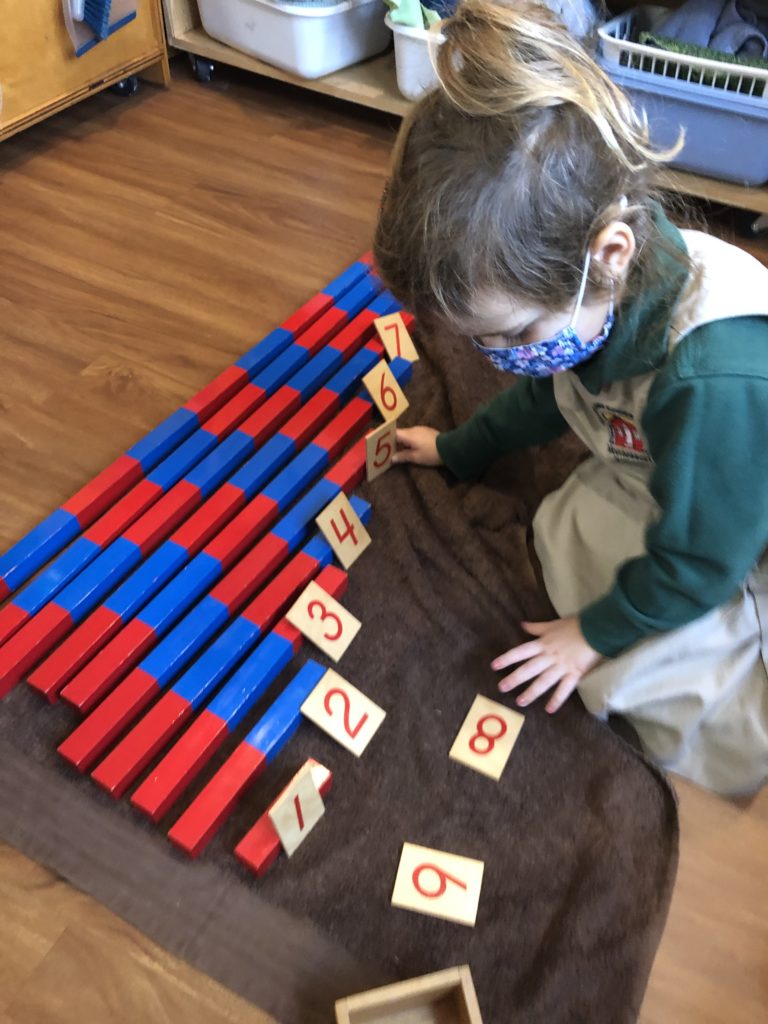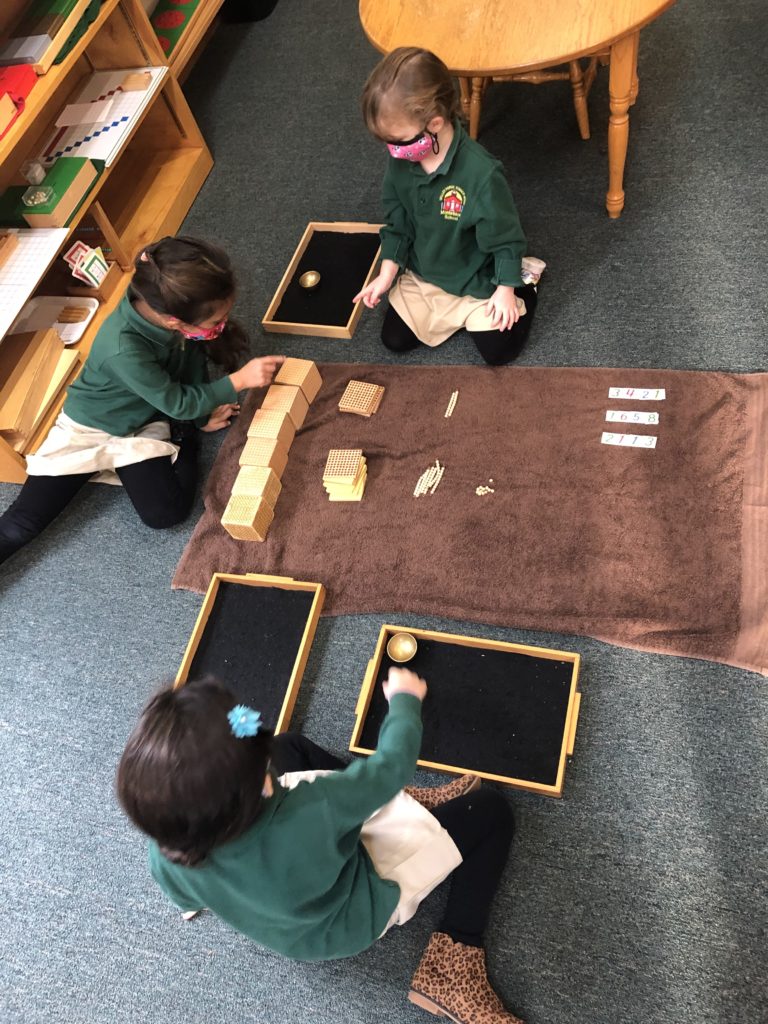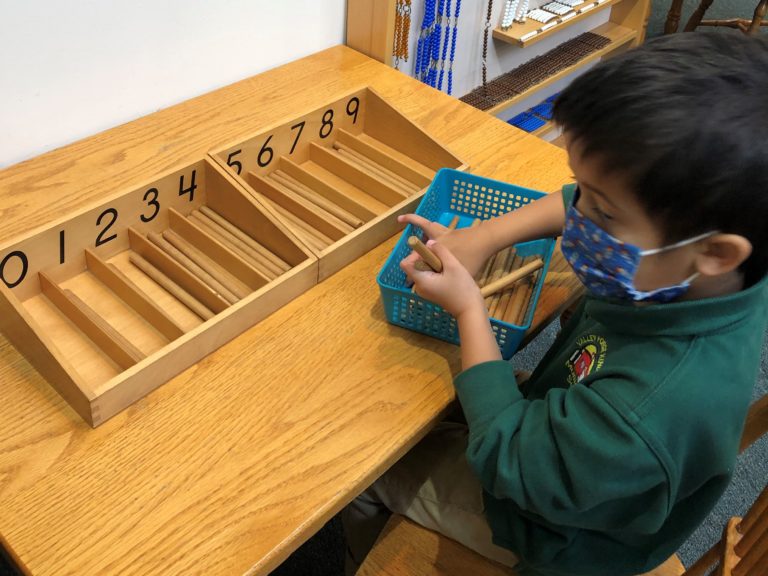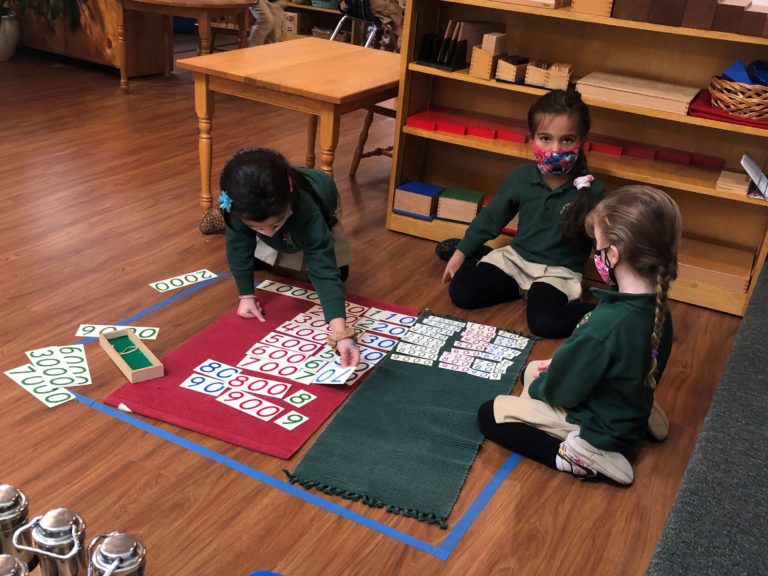Montessori students use hands-on learning materials that make abstract concepts clear and concrete. They can literally see and explore what is going on. Based on the research of Dr. Maria and Mario Montessori, this approach to teaching mathematics offers a clear and logical strategy for helping students understand and develop a sound foundation in mathematics and geometry. This month we will start with the beginning, basic materials that are more concrete. Next month, we’ll gradually work towards the more abstract levels of the curriculum.
Red and Blue Number Rods

The younger students are introduced to the concept of the Red and Blue Number Rods which provide a visual and counting experience for understanding basic quantities from 1 to 10. Further exploration with this material provides an insight that children begin to naturally develop, a sense of the nature of addition.
For example, when the children place the “one” number rod at the end of the “two” rod, they create a new rod that is the same length as the “three” rod that lies just above the one and two rods. They explore similar relationships with all of the numbers from 1 to 10 in this same fashion.
Spindle Rods
Other materials like this include the Spindle Rods, where the child is counting individual rods to represent a certain quantity and introducing the concept of “0”.
Numeral Cards and Counters
The Numeral Cards and Counters introduce children to odd and even numbers using individual counters that are set up in certain patterns. Once the basics of numerals and quantities are clearly established, the children are introduced to the Golden Bead Decimal System.
Golden Bead Tray

The children are first introduced to the Golden Bead tray for identifying each quantity such as the unit (one bead), ten bar (a set of ten units attached together in a single line), the hundred square (ten-ten bars attached together), and the thousand cube (ten hundred squares laid on top of each other).
The second tray consists of nine units, nine ten bars, nine hundred squares, and only one thousand cube where the child assembles a unique pattern to discover that ten unit beads will make a ten bar, ten-ten bars make a hundred square, and ten-hundred squares make a thousand cube.
Numeral Cards
Once the children clearly understand the building of beads to create new quantities, they are introduced to the Numeral Cards without beads. This special set of numeral cards is used to help the children learn to read numerals up to 9,999 and is later used to label the units, tens, hundreds and thousands when the Golden Beads are laid out next to them.
By doing all of the above activities, children begin to understand the concept of the hierarchy of the decimal quantities and how we borrow and carry from the next column in mathematical operations.


